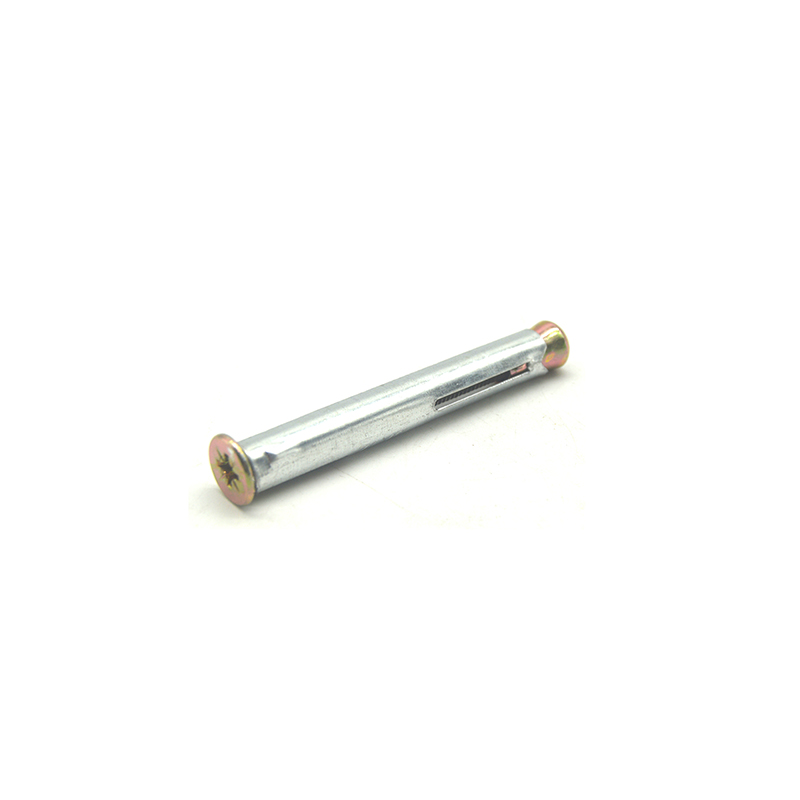- English
- Chinese
- French
- German
- Portuguese
- Spanish
- Russian
- Japanese
- Korean
- Arabic
- Irish
- Greek
- Turkish
- Italian
- Danish
- Romanian
- Indonesian
- Czech
- Afrikaans
- Swedish
- Polish
- Basque
- Catalan
- Esperanto
- Hindi
- Lao
- Albanian
- Amharic
- Armenian
- Azerbaijani
- Belarusian
- Bengali
- Bosnian
- Bulgarian
- Cebuano
- Chichewa
- Corsican
- Croatian
- Dutch
- Estonian
- Filipino
- Finnish
- Frisian
- Galician
- Georgian
- Gujarati
- Haitian
- Hausa
- Hawaiian
- Hebrew
- Hmong
- Hungarian
- Icelandic
- Igbo
- Javanese
- Kannada
- Kazakh
- Khmer
- Kurdish
- Kyrgyz
- Latin
- Latvian
- Lithuanian
- Luxembou..
- Macedonian
- Malagasy
- Malay
- Malayalam
- Maltese
- Maori
- Marathi
- Mongolian
- Burmese
- Nepali
- Norwegian
- Pashto
- Persian
- Punjabi
- Serbian
- Sesotho
- Sinhala
- Slovak
- Slovenian
- Somali
- Samoan
- Scots Gaelic
- Shona
- Sindhi
- Sundanese
- Swahili
- Tajik
- Tamil
- Telugu
- Ukrainian
- Urdu
- Uzbek
- Vietnamese
- Welsh
- Xhosa
- Yiddish
- Yoruba
- Zulu
- Kinyarwanda
- Tatar
- Oriya
- Turkmen
- Uyghur

สลักเกลียวขยาย
การทำความเข้าใจสกรูขยาย: ข้อมูลเชิงลึกเชิงปฏิบัติ
สลักเกลียวขยายมักถูกเข้าใจผิดและใช้อย่างไม่ถูกต้องในโครงการก่อสร้างต่างๆ การประยุกต์ใช้ในโลกแห่งความเป็นจริงต้องการมากกว่าความรู้ในตำราเรียน เรามาเจาะลึกข้อมูลเชิงลึกและประสบการณ์อันมีค่าที่เผยให้เห็นถึงความซับซ้อนและศักยภาพที่แท้จริงของพวกเขากัน
สลักเกลียวขยายคืออะไร?
สลักเกลียวขยายคือพุกที่ใช้ยึดวัสดุกับพื้นผิวคอนกรีตหรืออิฐ แตกต่างจากสลักเกลียวทั่วไป ตรงที่ออกแบบมาเพื่อขยายภายในรูที่เจาะ ทำให้เกิดด้ามจับที่มั่นคง แต่มีริ้วรอย — สลักเกลียวขยายแต่ละอันไม่เหมือนกัน และการใช้อย่างถูกต้องอาจท้าทายกว่าที่คิด
ตลาดมีสลักเกลียวขยายหลายประเภท ซึ่งแต่ละแบบเหมาะกับวัสดุประเภทต่างๆ และความต้องการด้านความแข็งแกร่ง การทำความเข้าใจสิ่งนี้ต้องอาศัยประสบการณ์ตรง ฉันจำโครงการหนึ่งที่การใช้สลักเกลียวผิดประเภททำให้เกิดแรงเฉือนที่ไม่คาดคิด นั่นเป็นบทเรียนที่ยากในการจับคู่ข้อมูลจำเพาะของโบลต์กับวัสดุ
Handan Shengtong Fastener Manufacturing Co., Ltd. ซึ่งตั้งอยู่ในมณฑล Hebei ให้บริการอุปกรณ์ยึดดังกล่าวหลายประเภท และความเชี่ยวชาญของพวกเขาก็เป็นสิ่งล้ำค่า คอลเลกชันของพวกเขาที่ ตัวยึด Shengtong ครอบคลุมความต้องการที่หลากหลาย และการปรึกษากับความต้องการเหล่านั้นสามารถช่วยหลีกเลี่ยงข้อผิดพลาดที่มีค่าใช้จ่ายสูงได้
ความท้าทายในการติดตั้ง
การติดตั้งสลักเกลียวขยายไม่ได้เป็นเพียงการเจาะรูและประกอบสลักเกลียวเท่านั้น สภาพแวดล้อมมีบทบาทอย่างมาก ความชื้น อุณหภูมิ และแม้แต่อายุของคอนกรีตก็อาจส่งผลต่อประสิทธิภาพการทำงานได้ ครั้งหนึ่งฉันเคยจัดการกับไซต์แห่งหนึ่งที่คอนกรีตเก่าพังทลายลงภายใต้แรงกดดัน ซึ่งนำไปสู่การคิดกลยุทธ์การยึดใหม่ทั้งหมด
เครื่องมือที่คุณเลือกยังส่งผลต่อความสำเร็จของการติดตั้งด้วย ประแจปอนด์ที่เชื่อถือได้ถือเป็นสิ่งสำคัญเพื่อให้แน่ใจว่าโบลต์ไม่แน่นหรือหลวมจนเกินไป เป็นเรื่องง่ายที่จะประเมินค่าความแน่นที่จำเป็นสูงเกินไป ซึ่งนำไปสู่การยึดเกาะที่อ่อนลงหรือแม้กระทั่งวัสดุที่อยู่รอบๆ แตกร้าว
ยิ่งกว่านั้นการควบคุมคุณภาพก็ไม่สามารถมองข้ามได้ การตรวจสอบโบลต์เป็นประจำ โดยเฉพาะอย่างยิ่งในสภาพแวดล้อมที่เสี่ยงต่อการกัดกร่อน จะช่วยป้องกันความล้มเหลวในระยะยาว ในโครงการชายฝั่งแห่งหนึ่งที่ฉันทำงานอยู่ การละเลยการตรวจสอบทำให้เกิดภัยพิบัติ เนื่องจากการกัดกร่อนของน้ำเค็มไม่มีใครสังเกตเห็นจนกระทั่งสายเกินไป
ความเข้าใจผิดที่พบบ่อย
ความเข้าใจผิดที่แพร่หลายคือการสันนิษฐานว่าสลักเกลียวที่ใหญ่กว่าจะดีกว่าเสมอ ในความเป็นจริง ขนาดจะต้องเป็นสัดส่วนกับน้ำหนักบรรทุกและความจุของวัสดุรองรับ การใช้สลักเกลียวขนาดใหญ่บางครั้งอาจทำให้เกิดความเสียหายโดยไม่จำเป็นโดยไม่เพิ่มความแข็งแรงในการยึดเกาะ
ปัญหาอีกประการหนึ่งคือข้อสันนิษฐานว่าเมื่อติดตั้งแล้ว โบลต์เหล่านี้จะคงการยึดไว้อย่างไม่มีกำหนด การเปลี่ยนแปลงน้ำหนักบรรทุกของอาคารหรือสภาพแวดล้อมสามารถเปลี่ยนแปลงประสิทธิภาพการทำงานได้ โดยต้องมีการประเมินใหม่เป็นระยะ
กรณีในชีวิตจริงคอยเตือนเราอยู่เสมอว่าความรู้ทางทฤษฎีจำเป็นต้องมีการประยุกต์ใช้ในทางปฏิบัติ การฟังประสบการณ์เล็กๆ น้อยๆ จากเพื่อนร่วมงานมักจะมีคุณค่าพอๆ กับคู่มือด้านเทคนิค ซึ่งให้ข้อมูลเชิงลึกเกี่ยวกับสถานการณ์ที่ไม่คาดคิด
การเลือกใช้วัสดุที่เหมาะสม
ความเข้ากันได้ของวัสดุคือทุกสิ่ง สแตนเลสอาจจะดีเลิศสำหรับการใช้งานบางอย่างแต่ก็เกินความจำเป็นสำหรับการใช้งานอื่นๆ สภาพแวดล้อม การสัมผัสกับสารเคมี และความคาดหวังในการบรรทุกจะเป็นตัวกำหนดการเลือกใช้วัสดุ
ผู้เชี่ยวชาญมักจะสามารถให้คำแนะนำอันมีค่าได้ ดังนั้นการให้คำปรึกษากับผู้ผลิตอย่าง Handan Shengtong Fastener Manufacturing Co., Ltd. จึงเป็นสิ่งสำคัญ ทีมงานของพวกเขาเข้าใจความต้องการของภูมิภาค ซึ่งทำให้คำแนะนำของพวกเขาเชื่อถือได้เป็นพิเศษ
บางครั้งความเรียบง่ายก็เป็นสิ่งสำคัญ — เลือกใช้รุ่นพื้นฐานที่เหมาะกับความต้องการของคุณ แทนที่จะเลือกรุ่นที่ทันสมัยที่สุด (และมีราคาแพง) วิธีการนี้จะช่วยประหยัดต้นทุนโดยไม่สูญเสียความสมบูรณ์
การทดสอบและการตรวจสอบ
อย่าประมาทพลังของการทดสอบ การดำเนินการทดสอบแบบดึงออกสามารถให้ความอุ่นใจได้ โดยยืนยันว่าการติดตั้งมีความปลอดภัยและสอดคล้องกับโหลดที่คาดหวัง ในการปรับปรุงที่ฉันมีส่วนร่วม เจ้าหน้าที่จำเป็นต้องมีการทดสอบก่อนที่จะอนุมัติการเปลี่ยนแปลง ซึ่งในตอนแรกรู้สึกว่าซ้ำซ้อนแต่ได้รับการพิสูจน์แล้วว่ารอบคอบ
การใช้อุปกรณ์ที่ทันสมัยในการทดสอบจะเน้นย้ำจุดอ่อนก่อนที่จะกลายเป็นปัญหาร้ายแรง ซึ่งช่วยให้คุณหลีกเลี่ยงหลุมพรางที่โปรเจ็กต์ที่เตรียมไว้น้อยกว่าจะพบ
ท้ายที่สุดแล้ว ทุกโครงการมีความท้าทายเฉพาะตัว บทเรียนที่ได้รับจากแต่ละบทเรียนจะป้อนเข้าสู่แหล่งสะสมประสบการณ์ ซึ่งเป็นแนวทางในความพยายามในอนาคต และทำให้มั่นใจว่าสลักเกลียวขยายจะตอบสนองวัตถุประสงค์ที่ตั้งใจไว้ได้อย่างมีประสิทธิภาพ
ที่เกี่ยวข้อง ผลิตภัณฑ์
สินค้าที่เกี่ยวข้อง



















